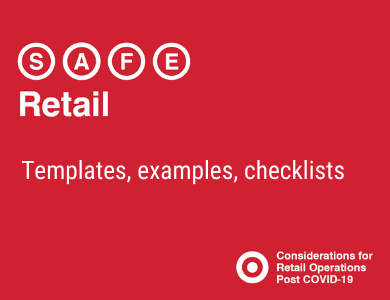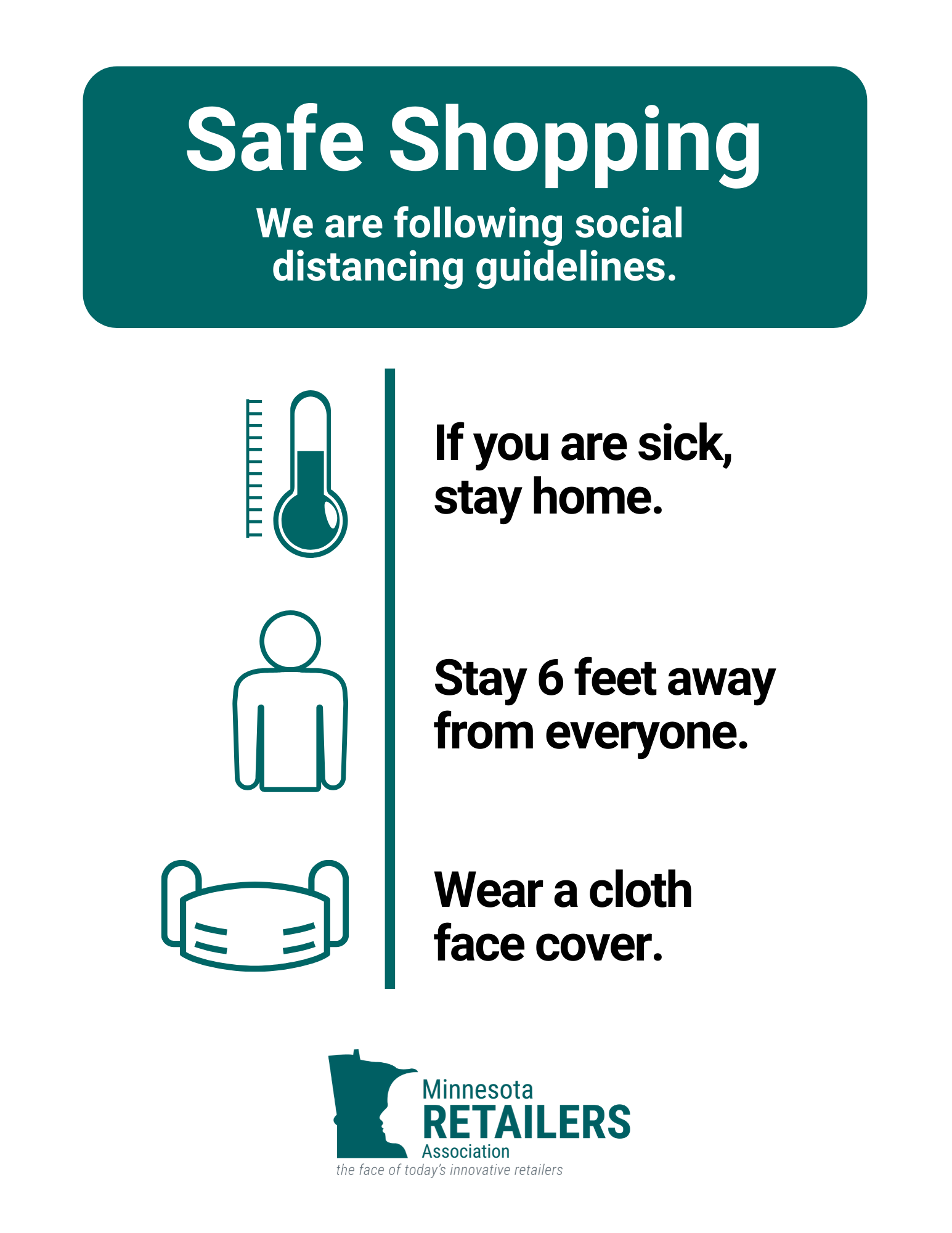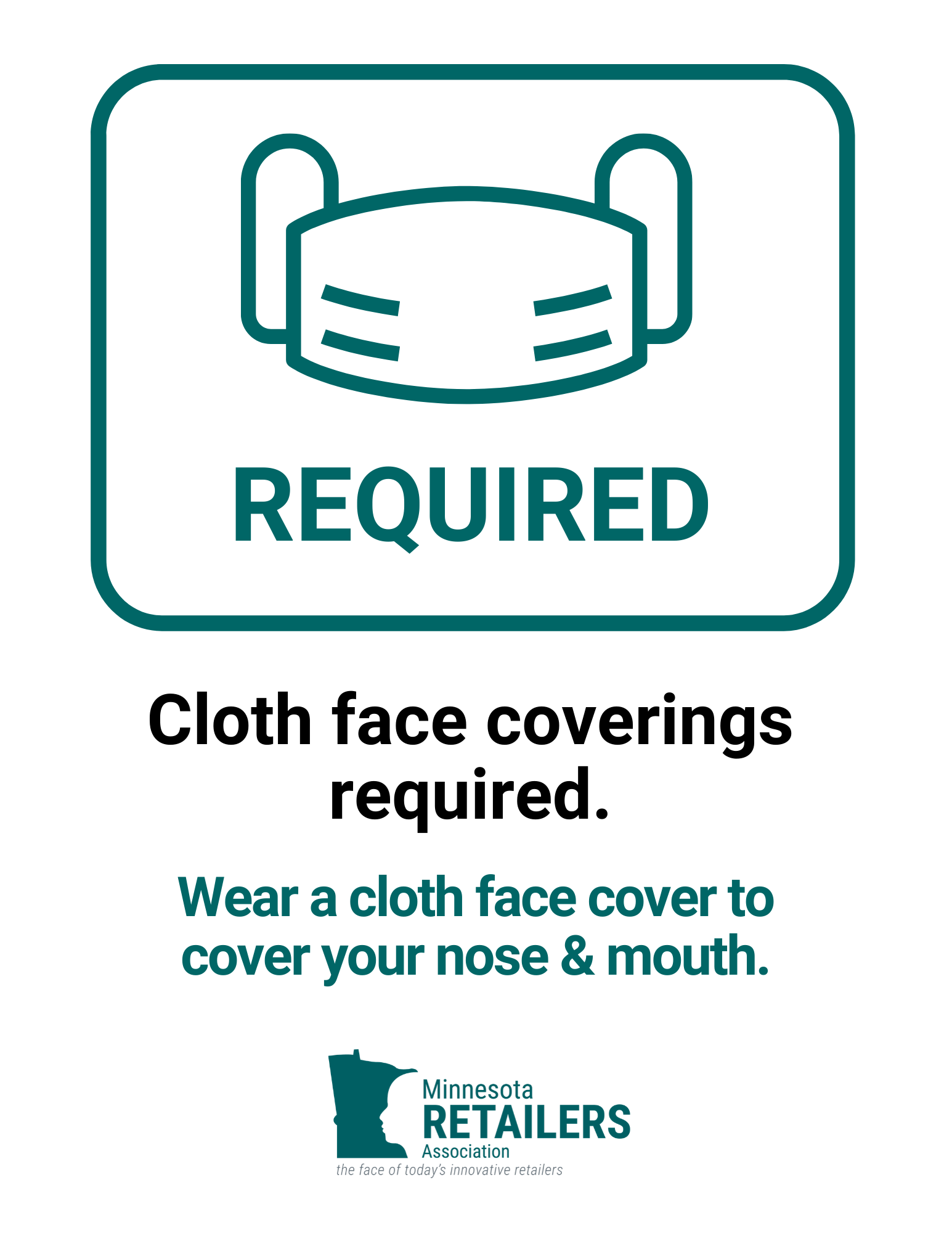May 30:
After another night of deep unrest and significant destruction of property in Minneapolis and to some degree in other parts of the metro, we want to provide you a few updates.
- CURFEWS: The vast majority of local governments in the metro have instituted curfews that continue tonight from 8:00 p.m. to 6:00 a.m., with a few variations on the times. Please check with your local government for times and updates on how curfews impact employees traveling to and from work. Curfews are likely to and should be enforced to a much greater degree than last night as a tool to maintain order and prevent looting and arson.
- LAW ENFORCEMENT PRESENCE: According to the plans discussed this morning by the Governor and key law enforcement leaders, this evening Minneapolis and St. Paul are positioned to enforce curfews as a means to identify and deal with vandals, looters and those setting fires. Please take a moment to remind your employees of the importance of obeying the curfews as a tool to separate those peacefully protesting and living their lives from those committing unlawful acts. Minneapolis, St. Paul and the State plan a large law enforcement presence this evening and have created the expectation they will be addressing those out past curfew as a tool for curbing unlawful activities.
- POP UP LOOTING: Pop up looting and property destruction continues to occur around the metro, not just in Minneapolis and St. Paul. Targeted business tend to be liquor, high-end clothing, tobacco, phones, electronics, pharmacy and convenience stores, but frankly no retailer is immune to this activity. We recommend all metro stores consider appropriate actions to safeguard your customers, employees and inventory. We have seen a number of store closures, boarding up of windows and communication with local law enforcement to help assess the situation.
- SHORT-TERM: We hope for a better night tonight but unfortunately recommend retailers plan as if unrest continues.
Some MnRA members have experienced complete or partial store losses. In addition, all retailers including our small businesses and new American-owned businesses are experiencing customer impacts only exacerbating the current COVID-19 environment.
MnRA is in communication with elected officials and law enforcement, and any retailer is welcome to contact us at any time for assistance.
We continue to pray for peace and justice, with the family of George Floyd, our communities, and a restoration of peace at the center of those prayers.
May 29:
Good afternoon MnRA members. Just an FYI that a curfew will be instituted by the Governor for Minneapolis and St. Paul beginning this evening from 8:00 p.m. – 6:00 a.m. The curfew will be evaluated on a day by day basis.
May 28:
Just a quick note as I am sure those of you with stores in the metro area are monitoring the unrest closely.
We have noted some instances where local police departments are recommending to businesses that they consider closing due to mobile groups that are looting stores or the potential for looting is high. In anticipation of demonstrations, Metro Transit has shut down light rail service and bus service will stop as of 4:00 p.m.
We recommend:
- Monitor your local police department’s social media feed or make a call to seek the advice of law enforcement.
- Error on the side of the safety of your employees and customers as you make decisions over the next couple of days, being mindful of how quickly situations can change.
- Be prepared to secure and close your store.
- Create a quick inventory of products on hand in the event you would need to file an insurance claim, including pictures and a date stamp.
Our hearts ache in this situation. We pray for justice and peace, and that stores are kept in a position where they are ready to the serve community needs in a safe, peaceful environment.
Please let us know if you need anything.
Written by Bruce Nustad
on Saturday, 30 May 2020.
Posted in Trends, Retail Operations
Local Chambers Of Commerce and Local Governments Are Saving Mainstreet--Responding To The Pandemic With Relief And Creativity
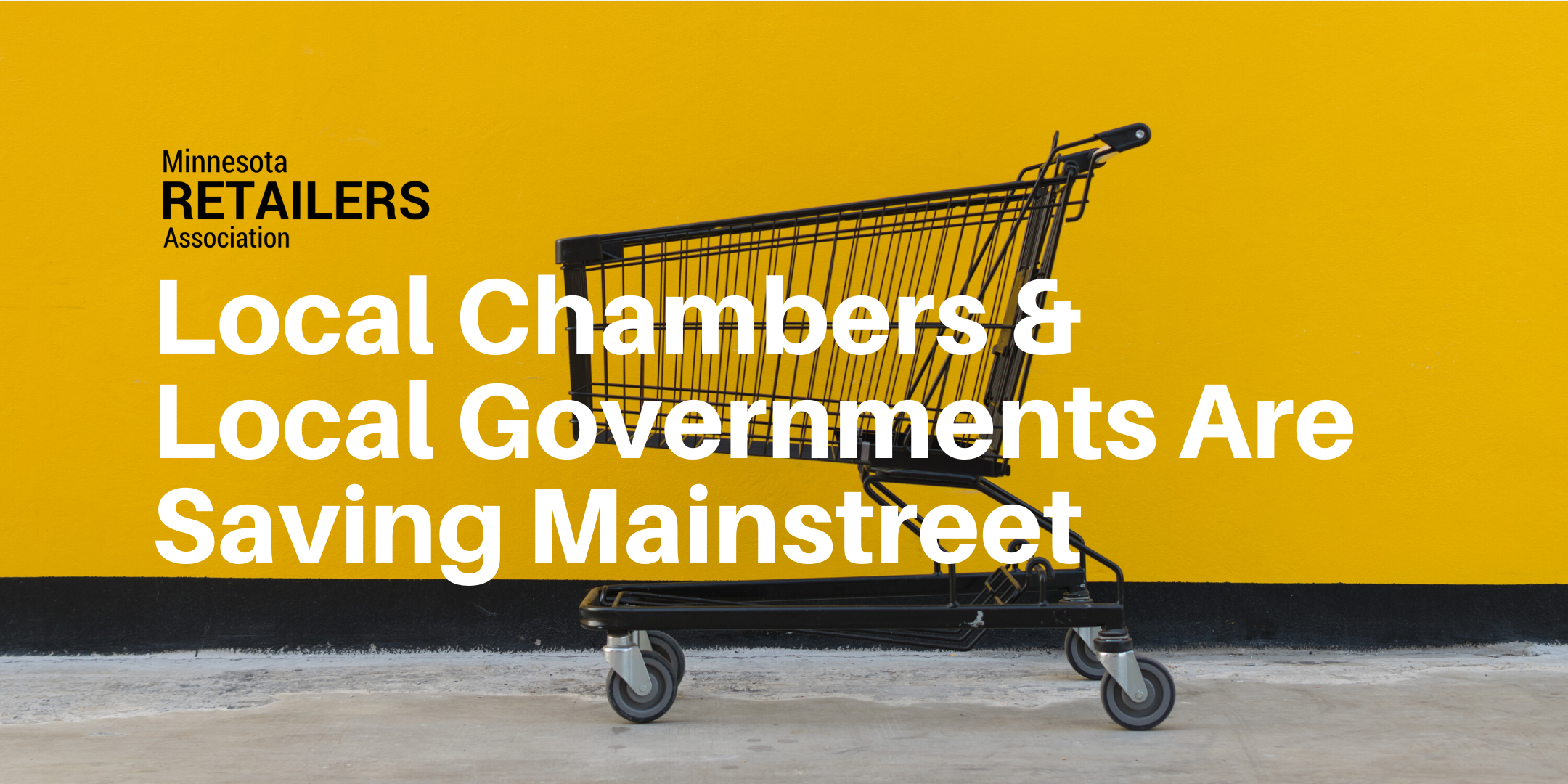
From mandatory closures to reduced customers and increased expenses, COVID-19 has taken a heavy toll on retailers and all of Minnesota's industries. At the Minnesota Retailers Association we have been inspired and impressed with the incredible support local chambers of commerce, local business associations, and their partnering local governments have been providing throughout the pandemic.
"We know today, local chamber executives and their teams are on the pandemic economic front-line, working long hours to keep businesses informed and help them prepare for what's coming next," said Minnesota Retailers Association President Bruce Nustad. "An important part of the impressive local chamber work has been their collaboration with cities and counties. And we have seen local governments step up in big, big ways in partnership with their chamber of commerce through creativity and flexibility. In many ways, through their collaborations over the years, local chambers and local government have trained for this very moment, and retailers, small businesses and the Minnesota Retailers Association are so grateful. These collaborations and resulting actions are leading the efforts to save Minnesota's mainstreets."
While federal and state relief and support initiatives are important, here are a few examples of how local chambers in partnership with local governments are making a significant difference in keeping local economies moving forward:
- Timely and critical relief funding
- Grants to help businesses stay afloat and re-open or prepare to re-open under safety protocols
- Relaxed signage regulations allowing business to better communicate with customers
- Flexibility with sidewalks, allowing the expansion of stores outdoors
- Re-open initiatives that unify the chamber and government around safe re-openings
- Letters of support for local communities highlighting local needs
- Backing of safe shopping zones, welcoming customers back
- Speeding permit processes
- Expansion of outdoor dining
- Sharing of ideas and updates
These efforts and many more represent the vital work being done by chambers of commerce, business associations and local governments. Thank you to each!
Now is a great time to support your local chamber or business association through membership!
Written by Bruce Nustad
on Monday, 25 May 2020.
Posted in Trends, Retail Operations, Policy & Politics

In good news for consumers and retailers, retail stores including stores and malls/shopping centers can re-open to guests on May 18 following Governor Walz issuance of Executive Order 20-56 May 13. The Minnesota Retailers Association worked with DEED Commissioner Steve Grove and a retail roundtable workgroup (representing retailers, chambers of commerce, associations, and other stakeholders) including the Minnesota Retailers Associaiton, the MetroNorth Chamber of Commerce, the Twin Cities North Chamber of Commerce and others on re-open guidelines over the past few weeks. Those guidelines are listed below.
The guidelines below do not constitute legal advice and each retailer should do its very best to put in place a re-open plan tailored to best practices and safety for employees and customers.
These guidelines are not intended to apply to restaurants, bars, salons and other business where separate re-opening plans are being contemplated or businesses that are open under existing Executive Orders. We will post links to guidelines for these business when they are available.
Dates for opening and related guidelines:
MnRA's Suggested Guidelines For Re-Opening A Minnesota Customer Facing Business
1. Requirements To Re-Open
The below items are requirements to re-open:
-
Create And Execute A Safety Plan. Retailers must have a safety plan available to workers, customers, the public and government officials with option to modify the existing COVID-19 Preparedness Plan template available at www.dli.mn.gov/updates. THIS IS REQUIRED UNDER EXECUTIVE ORDER 20-56 & SUBSEQUENT ORDERS.
-
Include Best Practices Modified To The Retail Setting. A safety plan should contemplate but need not be limited to tailored, site-specific best practices surrounding health/wellness, social distancing, cleaning/sanitation/protection, and operations/communications for in-store customers, appointments, curbside pickup and delivery. See the best practices outline and resources below for suggestions. ADDRESSING BEST PRACTICES IS REQUIRED UNDER EXECUTIVE ORDER 20-56 & SUBSEQUENT EXECUTIVE ORDERS.
Also, note the "Employer plan requirements checklist" from the Department of Labor and Industry. See this list for plan requirements which includes items for malls and shopping centers.
-
Modify Occupancy To Accommodate Social Distancing. Retailers must adjust allowable occupancy and consider regulating customer flow to accommodate social distancing and safety. A 50% OCCUPANCY (MAXIMUM) STANDARD IS REQUIRED UNDER EXECUTIVE ORDER 20-56 AND SUBSEQUENT EXECUTIVE ORDERS.
2. Best Practices Outline
The below items should be considered in the safety plan and included, excluded, or modified to improve safety for employees and customers. The safety plan should be specific to the store.
Health and wellness:
-
-
Evaluate employee health according to CDC and MDH guidelines and screen employees so that only well employees are at work.
-
Adjust policies to accommodate employees not working due to illness or COVID-19 symptoms.
-
Ask that only healthy customers feeling well shop in the store.
Social distancing:
-
-
Evaluate space, change configuration, adjust flow and modify occupancy with guidepost of 50 percent of occupancy rating or other occupancy metric with deference to ensuring social distancing per CDC guidelines and recommendations.
-
Control building access and regulate customer movement with consideration of one-way traffic.
-
Use signage at the door and throughout the store as well as public address system messages if available to remind customers of social distancing.
-
At checkout and areas of high congestion mark out social distancing, including floor markers for distance, line lanes, and marking adjacent areas where customers may be waiting for store access.
-
At checkout extend space between the customer and clerk with markings, physical barrier, or plexiglass divider.
-
Reconfigure space used for fittings to provide social distancing between customers and protections for customers and employees.
-
Encourage customer use of curbside, delivery, and appointment options.
Cleaning, sanitation & protection:
-
-
Execute an enhanced, thorough overall store cleaning schedule.
-
Clean and disinfect high touch surfaces frequently.
-
Make hand sanitizer available to customers and employees.
-
Follow Minnesota Department of Heath guidance and relevant Executive Orders on face covering use by employees and customers unless a stronger store policy is articulated.
-
Add protective shields at checkout where social distancing is not practical.
-
Clean fitting rooms, especially high touch areas, following each customer use.
-
Modify merchandise return policies to accommodate cleaning and/or delay of product return to shelves.
-
Make gloves available to workers and articulate when gloves should be used.
Operations & communications:
-
-
Clearly communicate safety actions and procedures to employees and consumers (website, signage, e-mail).
-
Train all employees on procedures and service surrounding safety protocols and practices, including customer service reminders on social distancing.
-
Make interactions between customers and employees as contactless as practical, including fittings, signatures, transactions, and payments.
-
Have employees make a special effort to engage customers to help them find products efficiently and remind them to practice social distancing.
-
Ask a customer’s permission to touch their products, allow a customer to position their own products for checkout, and encourage self-service bagging.
-
Consider special shopping hours for high-risk individuals and modified hours of operation to accommodate cleaning.
-
Modify and communicate changes to your policies including return merchandise and reusable bags.
-
Discontinue group customer events and sampling.
-
Review safety procedures and expectations with vendors.
-
Thank customers and workers for their focus on safety.
3. Best Practices Resources
The following resources are available as customer facing businesses craft their plans for re-opening. If you have a best practice document or resource to share, please e-mail us at
This email address is being protected from spambots. You need JavaScript enabled to view it.. As always, check
www.mnretail.org/covid-19 for the latest news impacting retailers.
Download & Print Signs
Based on requests from retailers, MnRA offers these signs for download and print. Note: Face coverings are strongly recommended by the Governor and each retailer is allowed to make its own decision on whether they are required or requested. As such we are providing two sign options below.
Also, check out the Target S.A.F.E. Retail document for many printable signs and policies.
Just Added: Watch Our Re-Opening Guidance Webinar Now
Written by Bruce Nustad
on Wednesday, 13 May 2020.
Posted in MnRA News, Retail Operations


